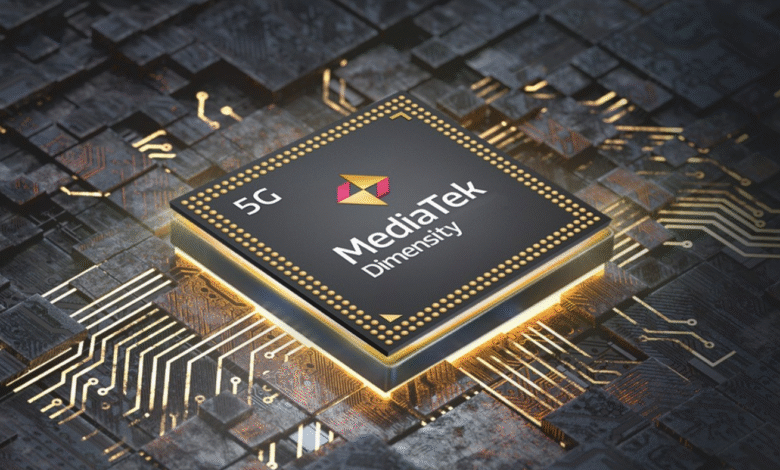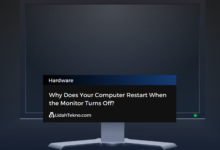MediaTek Dimensity Tier List: Performance Ranked (2025)

The smartphone landscape has changed dramatically over the last few years. There was a time when looking for a high-performance device meant strictly sticking to Snapdragon processors. However, that narrative has shifted. By 2025, MediaTek has not only caught up but, in some categories, surpassed its competitors. Their Dimensity line of chips now powers some of the most impressive Android devices on the market, ranging from budget-friendly options to absolute powerhouses.
Navigating the sea of model numbers can be confusing. Does a higher number always mean better performance? How does the new 8000 series compare to an older 9000 chip? To help you make an informed decision, we have compiled a comprehensive tier list of MediaTek Dimensity processors for 2025.
Understanding the Dimensity Naming Strategy
Before diving into the specific rankings, it is crucial to understand how MediaTek categorizes its chips. This knowledge will help you identify the class of a phone simply by looking at the spec sheet.
9000 Series: These are the flagship chipsets. They utilize the latest technology, the fastest clock speeds, and the most advanced AI processing units (NPUs). They are designed to compete directly with the top-tier Snapdragon 8 series and Apple’s A-series chips.
8000 Series: This is the premium mid-range category. These chips often use flagship architecture from the previous year or slightly scaled-down versions of current flagships. They are known as “flagship killers.”
7000 Series: The true mid-range. These processors prioritize power efficiency and reliable day-to-day performance over raw gaming power.
6000 Series: The entry-level line. These chips bring 5G connectivity to the most affordable devices, suitable for social media and light tasks.
Tier S: The Absolute Flagships (9000 Series)
In 2025, the crown jewel of MediaTek’s lineup is the Dimensity 9400 series. Building upon the revolutionary “All Big Core” design introduced in the previous generation, these chips have redefined mobile computing.
Dimensity 9400 and 9400+
The Dimensity 9400 is the current king of the hill. According to recent benchmark analysis by GSMArena, this chipset shows significant improvements in ray-tracing capabilities, making it a dream for mobile gamers. MediaTek has ditched the small efficiency cores entirely in favor of performance cores, relying on advanced manufacturing processes to keep battery consumption in check.
Key features include:
On-device AI: Capable of running complex Large Language Models (LLMs) directly on the phone without needing a cloud connection.
Immortalis GPU: The graphics performance now rivals dedicated handheld consoles, supporting hardware-based ray tracing.
Photography: Enhanced ISP (Image Signal Processor) that supports massive sensors and advanced computational photography.
Dimensity 9300 and 9300+
While technically a year older, the Dimensity 9300+ remains a beast in 2025. It was the first to popularize the architecture that uses only high-performance cores. For 99% of users, the difference between the 9300+ and the 9400 will be negligible in daily tasks. It remains an S-Tier chip that handles heavy gaming like Genshin Impact or Zenless Zone Zero at maximum settings with ease.
Note: Devices with these chips require good cooling systems. As reported by heavy users on forums like XDA Developers, the “All Big Core” design can generate heat if the phone manufacturer does not implement adequate thermal management.
Tier A: Premium Mid-Range & Flagship Killers (8000 Series)
This is often the “sweet spot” for value-oriented buyers. You get near-flagship performance for a significantly lower price.
Dimensity 8400 and 8300 Ultra
The Dimensity 8400 is the star of the upper mid-range market in 2025. It borrows heavily from the 9000 series architecture but runs at slightly lower clock speeds.
According to Android Authority, the 8300 Ultra surprised the industry by outperforming older flagship chips in raw benchmarks. These chips are excellent for users who game frequently but do not want to spend over $800 on a phone. They are highly efficient, often providing better battery life than the S-Tier chips because they consume less power during standby and light tasks.
Best for:
Competitive mobile gaming (PUBG Mobile, CODM) at high frame rates.
Heavy multitasking.
Video editing for social media.
Tier B: The Reliable Mid-Range (7000 Series)
The 7000 series is designed for the average user who wants a smooth experience without breaking the bank.
Dimensity 7300 and 7200
These chips are built on modern manufacturing processes (4nm), which ensures they run cool and sip battery. While they lack the raw GPU power for professional-grade gaming, they are more than capable of handling everyday apps.
The Dimensity 7200, for instance, has been praised for its stability. You will rarely experience lag in the user interface or while switching between apps. Photography support is solid, though it may lack the 8K video recording capabilities found in higher tiers.
Best for:
Social media scrolling (TikTok, Instagram).
Streaming high-definition video.
Casual gaming (Candy Crush, Subway Surfers, lighter RPGs).
Tier C: Entry-Level 5G (6000 Series)
The 6000 series has a very specific mission: to bring 5G to everyone.
Dimensity 6300 and 6100+
These processors are found in budget phones. They are not designed for heavy loads. However, they represent a massive leap forward compared to the budget chips of three years ago. They support high refresh rate screens (usually 90Hz or 120Hz), making the phone feel smoother than the specs might suggest.
According to reviews from TechRadar, phones in this category are excellent starter devices for kids or reliable phones for seniors who do not need advanced processing power.
2025 MediaTek Dimensity Ranking Table
Below is the summarized hierarchy of MediaTek chips available in devices in 2025, including their approximate Snapdragon equivalents to help you compare.
| Tier | MediaTek Chipset | Approx. Snapdragon Equivalent | Best Use Case |
| S+ | Dimensity 9400 / 9400+ | Snapdragon 8 Elite (Gen 4) | Extreme Gaming, AI, Pro Video |
| S | Dimensity 9300 / 9300+ | Snapdragon 8 Gen 3 | High-End Gaming, Flagship Daily Driver |
| A+ | Dimensity 9200+ / 8400 | Snapdragon 8 Gen 2 | Performance on a Budget |
| A | Dimensity 8300 / 8200 | Snapdragon 7+ Gen 3 | Balanced Gaming & Battery |
| B | Dimensity 7300 / 7200 | Snapdragon 7 Gen 3 / 7s Gen 2 | General Use, Light Gaming |
| C | Dimensity 7050 / 1080 | Snapdragon 778G | Reliable Daily Tasks |
| D | Dimensity 6300 / 6100+ | Snapdragon 695 / 4 Gen 2 | Basic Use, Budget 5G |
Key Factors Beyond the Chipset
While the processor is the engine of the smartphone, it is not the only part that matters. When looking at the Dimensity tier list, keep in mind that the final experience depends on how the manufacturer integrates the chip.
RAM and Storage: A Dimensity 9400 paired with slow storage (UFS 3.1) will feel slower than a Dimensity 8300 paired with the latest UFS 4.0 storage. Always check the storage type.
Cooling Systems: As mentioned earlier, high-performance chips generate heat. A gaming phone with a dedicated vapor chamber cooling system will sustain peak performance longer than a slim fashion phone with the exact same processor.
Software Optimization: Brands like Xiaomi, OPPO, and Vivo work closely with MediaTek to optimize their software (HyperOS, ColorOS, Funtouch OS). According to user reports, software optimization can impact battery life by as much as 20%.
MediaTek vs. Snapdragon in 2025
The rivalry continues to heat up. Historically, Snapdragon held the lead in custom ROM support and emulation (playing console games on Android). However, MediaTek has closed the gap significantly.
Efficiency: In 2025, MediaTek is widely regarded as the leader in power efficiency for mid-range chips. The Dimensity 8000 series generally offers better battery life than equivalent Snapdragon chips.
GPU Power: Snapdragon’s Adreno GPU still holds a slight edge in driver support for emulators, but MediaTek’s Immortalis GPU has largely equalized the playing field for native Android games.
Price: Generally, a phone with a MediaTek chip will be cheaper than a phone with a comparable Snapdragon chip, offering better value for money.
Conclusion
The MediaTek Dimensity lineup in 2025 offers something for everyone. If you want the absolute best performance without compromise, the Dimensity 9400 is the way to go. For savvy buyers who want 90% of the performance for 60% of the price, the Dimensity 8300/8400 series is the smartest choice in the market today.
Even at the lower end, the 7000 and 6000 series ensure that budget devices are no longer sluggish bricks but capable communication tools. When choosing your next smartphone, use this tier list as a guide, but remember to look at the whole package, including screen, battery, and camera quality.
Frequently Asked Questions (FAQ)
Q: Do MediaTek processors still overheat?
A: This is largely a myth from the past. Modern Dimensity chips (especially the 4nm and 3nm ones) are extremely efficient. While flagship chips like the 9400 can get warm under heavy load, this is true for all high-end processors, including Apple’s and Qualcomm’s.
Q: Which Dimensity chip is best for gaming?
A: The Dimensity 9400 and 9300+ are the best for hardcore gaming. However, the Dimensity 8300 Ultra is arguably the best “value” gaming chip, handling modern titles excellently.
Q: Can Dimensity chips run emulators?
A: Yes. While Snapdragon has historically been better for emulation due to driver support, the raw power of the Dimensity 9000 series makes them very capable of emulating consoles up to the PS2 and GameCube era smoothly.
Q: Is MediaTek better than Snapdragon?
A: It depends on the specific comparison. At the entry and mid-range levels, MediaTek often offers better value and efficiency. At the flagship level, it is a fierce tie, with MediaTek often winning on multi-core performance and Snapdragon winning on GPU driver support.
Q: What does “Ultra” or “Max” mean after the model number?
A: These are usually custom versions of the chip tweaked for specific smartphone manufacturers (like Xiaomi or OnePlus). They might have slightly higher clock speeds or enhanced AI processing for cameras, but the core performance remains similar to the standard model.

